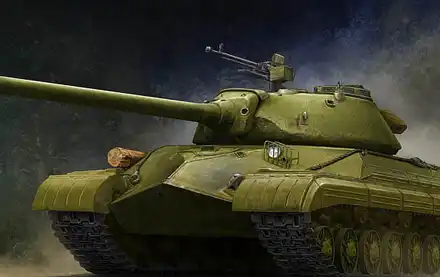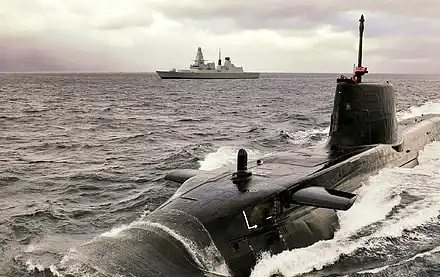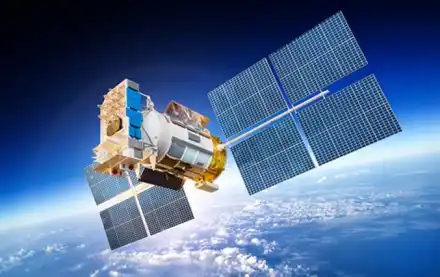




Cesare

China recently conducted a long-range patrol of the Nine-Dash Line in the Pacific Ocean, deploying one of its H-6 bombers. This action was reportedly in response to President-elect Trump\'s remarks suggesting a potential shift in the United States policy towards Taiwan. The patrol appeared to mimic the U.S. Air Force\'s practice of flying B-52 bombers in response to geopolitical tensions.
China, Russia, and the United States are the primary operators of long-range strategic bombers. The H-6, like the American B-52 and Russian Tu-95 Bear, dates to the 1950s and continues to serve in the People’s Liberation Air Force (PLAAF) and Naval Air Force, with up to 180 units produced.
Originally designed for strategic bombing, the H-6\'s role evolved as advancements in missile technology rendered traditional overflights impractical by the 1960s. By the 1970s, the PLAAF sought to enhance the H-6\'s capabilities, leading to the development of the H-6D variant armed with C-601 Silkworm anti-shipping missiles.
In 1987, Iraq acquired four H-6Ds with fifty C-601 missiles, which were utilised in the Iran-Iraq War. The effectiveness of the C-601 missiles against oil tankers and bulk carriers during the conflict varied, with reports indicating moderate success in causing damage, particularly to the Iranian freighter Entekhab, although the overall impact on the targeted vessels was limited.
Design
The H-6 is a Chinese strategic bomber that is based on the Soviet Tupolev Tu-16 Badger. In 1958-59, China received a limited number of Tu-16s from Russia and later established a licensed production agreement with them. In 1965, a Chinese-operated Tu-16 conducted China\'s first air-dropped atomic bomb deployment.
The Xi\'an Aircraft Industrial Corporation in northern China produced the first H-6 in 1968. The H-6 was powered by two WP8 turbojets, reverse-engineered from the original Russian AM-30 engines. It could reach speeds of up to 656 miles per hour and carry bomb loads ranging from 6,000 to 18,000 pounds within a combat radius of 1,100 miles.
While concerns have been raised about the H-6\'s capabilities, it is expected to remain a key part of China\'s bomber fleet for several more years, even with the anticipated introduction of the new H-20 stealth bomber.
Since the 1960s, the H-6 has been upgraded into advanced variants such as the H-6K, H-6N, and H-6J, which are currently being used by the Chinese military. These newer variants feature more powerful engines, updated design elements, and the potential for new radar technology.
Production variants
Xi\'an H-6 – (Conventional Bomber) Original conventional bomber, Tupolev Tu-16, produced under license in China, first flew in 1959. A prototype conducted China’s first aerial nuclear weapon test at Lop Nor on 14 May 1965.
Xi\'an H-6A – (Nuclear Bomber) First Chinese nuclear bomber; developed under Mission 21-511 in parallel with the original H-6;[1][7] modifications include heat-insulated and air-conditioned bomb bay, improved bomb release system, and monitoring equipment for nuclear testing; conducted PRC\'s first nuclear test on 14 May 1965.
Xi\'an H-6B – (Reconnaissance Aircraft) Developed in parallel with H-6A and outfitted with specialised equipment.
Xi\'an H-6C – (Conventional Bomber) Improved countermeasure suite; initially designated \'H-6III\'.
Xi\'an H-6D – (Maritime-Strike Bomber) Anti-ship missile carrier introduced in the early 1980s, armed with two air-launched C-601 (Silkworm) missiles, one mounted under each wing, fitted with larger radome under the nose and various improved systems. Later upgraded to either two C-301 supersonic anti-ship missiles or four C-101 supersonic anti-ship missiles. An upgraded version, capable of carrying four YJ-8 (C-801) anti-ship missiles, is currently under development.[29] Initially designated H-6IV.
Xi\'an H-6E – (Nuclear Bomber) Improved countermeasures suite, entered service in the 1980s.
Xi\'an H-6F – (Conventional Bomber) New designation for upgraded H-6A and H-6C. Many aircraft were upgraded in the 1990s with new inertial navigation systems, doppler navigation radar and GPS receiver.
Xi\'an H-6G – (EW & C3 Aircraft) Provides targeting data for ground-launched cruise missiles built in the 1990s. No internal bomb bay or defensive armament. Electronic-warfare aircraft with underwing electronic countermeasures pods.
Xi\'an H-6H – (Cruise Missile Carrier) Land-attack cruise missile carrier armed with two missiles, built in the 1990s. No internal bomb bay or defensive armament.
Xi\'an H-6K – (Conventional Bomber) The Latest H-6 variant, re-engined with D-30KP turbofan engines of 12,000 kg thrust, replacing the original Chinese turbojets. Other modifications include larger air intakes, a re-designed flight deck with smaller/fewer transparencies and a large dielectric nose radome.
Xi\'an H-6J – (Maritime-Strike Bomber) Modified H-6K for use by the People’s Liberation Army Navy Air Force (PLANAF) to replace the H-6G; has a greater payload and range with performance like H-6K.
Xi\'an H-6M – (Cruise Missile Carrier) Fitted with a terrain-following system and four under-wing hardpoints for weapons carriage. No internal bomb bay or defensive armament. Production of this variant is believed to have resumed in early 2006.
Xi\'an H-6N – (Nuclear Bomber) Reshaped the fuselage in place of the bomb bay to mount an air-launched ballistic missile,[51] likely the CH-AS-X-13 – an air-launched variant of the DF-21 anti-ship ballistic missile. It may also carry the CJ-10K/KD-20 or KD-63 land attack cruise missiles. The bomber may have entered service in 2018.
Xi\'an HD-6 – (Electronic Warfare Aircraft) Solid nose and canoe fairing are believed to contain electronic counter-measures equipment.
Xi\'an HY-6 – (Air Refueler) First successful in-flight refuelling tanker variant in Chinese service. Retained PV-23 fire control system of H-6 and thus can still be deployed as a missile launcher.
Xi\'an HY-6U – (Air Refueler) Modified HY-6 tanker in service with the PLAAF, with PV-23 fire control system and Type 244 radar deleted, and thus a dedicated refuelling aircraft Also referred to as H-6U.
Xi\'an HY-6D – (Naval Air Refueler) First aerial refuelling tanker for PLANAF, converted from H-6D. The most distinct difference between HY-6U and HY-6D is that HY-6U has a metal nose cone, while HY-6D still has a transparent glass nose. Like the original HY-6, the PV-23 fire control system is also retained on HY-6D, which enables the aircraft to serve as a missile-carrying and launching platform.
Xi\'an HY-6DU – (Naval Air Refueler) Aerial refuelling tanker for the PLANAF, modified HY-6D, also referred to as H-6DU. Like HY-6U, HY-6DU is a dedicated aerial refuelling tanker when its PV-23 fire control system is removed from the aircraft.
Conclusion
The Pentagon has pointed out that the PLAAF\'s H-6K, which is equipped with three hardpoints under each wing, can target the significant US Pacific base in Guam. Additionally, the PLANAF variant of the H-6K, known as the H-6J, is also equipped with three hardpoints under each wing, allowing it to carry six YJ-12 supersonic anti-ship cruise missiles. This configuration enables it to engage ships as far as the \"Second Island Chain,\" which extends from Japan through Guam to the South Pacific. These capabilities complement those of the older H-6G, which can carry four YJ-12s.
Strategically important locations such as Taiwan, which Beijing regards as a seceded province, as well as Okinawa in Japan, South Korea, and various Southeast Asian countries, are within the effective operational range of the H-6 fleet. Notably, H-6K aircraft have conducted simulated landings at military installations that China has established on atolls in the South China Sea.
According to an interactive map presented by the Asia Maritime Transparency Initiative, H-6 bombers deployed from South China Sea atolls have a combat radius encompassing all of Southeast Asia, including the critical maritime passage of the Straits of Malacca.
In the event of a conflict in which the Chinese Communist Party were to decide to initiate attacks on US and allied bases in the region, it is anticipated that H-6-launched cruise missile assaults would be coordinated with strikes from short- and intermediate-range ballistic missiles, of which Beijing maintains a substantial inventory. The simultaneous deployment of air-launched cruise and ballistic missiles would be planned to overwhelm air base defences.
Specifications
General characteristics
Crew: 4
Length: 34.8 m (114 ft 2 in)
Wingspan: 33 m (108 ft 3 in)
Height: 10.36 m (34 ft 0 in)
Wing area: 165 m2 (1,780 sq ft)
Airfoil: root: PR-1-10S-9 (15.7%); tip: PR-1-10S-9 (12%)
Empty weight: 37,200 kg (82,012 lb)
Max take-off weight: 95,000 kg (209,439 lb)
Powerplant: 2 × Soloviev D-30KP-2 turbofan engines, 118 kN (27,000 lbf) thrust each
Performance
Maximum speed: 1,050 km/h (650 mph, 570 kn)
Cruise speed: 768 km/h (477 mph, 415 kn) / 0.75M
Range: 6,000 km (3,700 mi, 3,200 nmi)
Combat range: 1,800 km (1,100 mi, 970 nmi)
Service ceiling: 12,800 m (42,000 ft)
Wing loading: 460 kg/m2 (94 lb/sq ft)
Thrust/weight: 0.24
Armament
Guns:
2× 23 mm (0.906 in) Nudelman-Rikhter NR-23 cannons in remote dorsal turret
2× NR-23 cannons in the remote ventral turret
2× NR-23 cannons in manned tail turret
1× NR-23 cannons in the nose (occasional addition)
Missiles:
6 or 7 KD-88 missile (anti-ship or air-to-surface)
YJ-100 (CJ-10) anti-ship missile
C-601 anti-ship missile
YJ-62 anti-ship missile
C-301 anti-ship missile
C-101 anti-ship missile
CM-802A
YJ-12 anti-ship missile
CH-AS-X-13 (H-6N)
Bombs: 12,000 kg (26,400 lb) of free-fall weapons
Guided bombs
GB6
CS/BBC5
GB2A
GB5